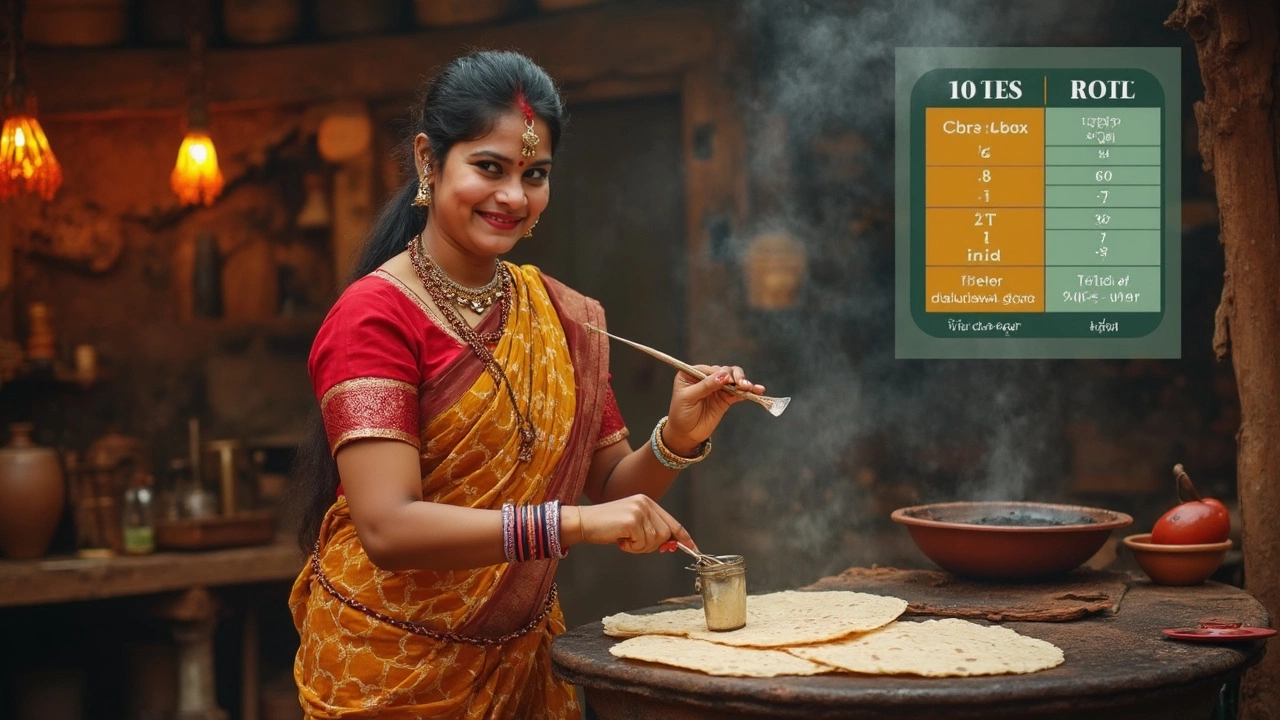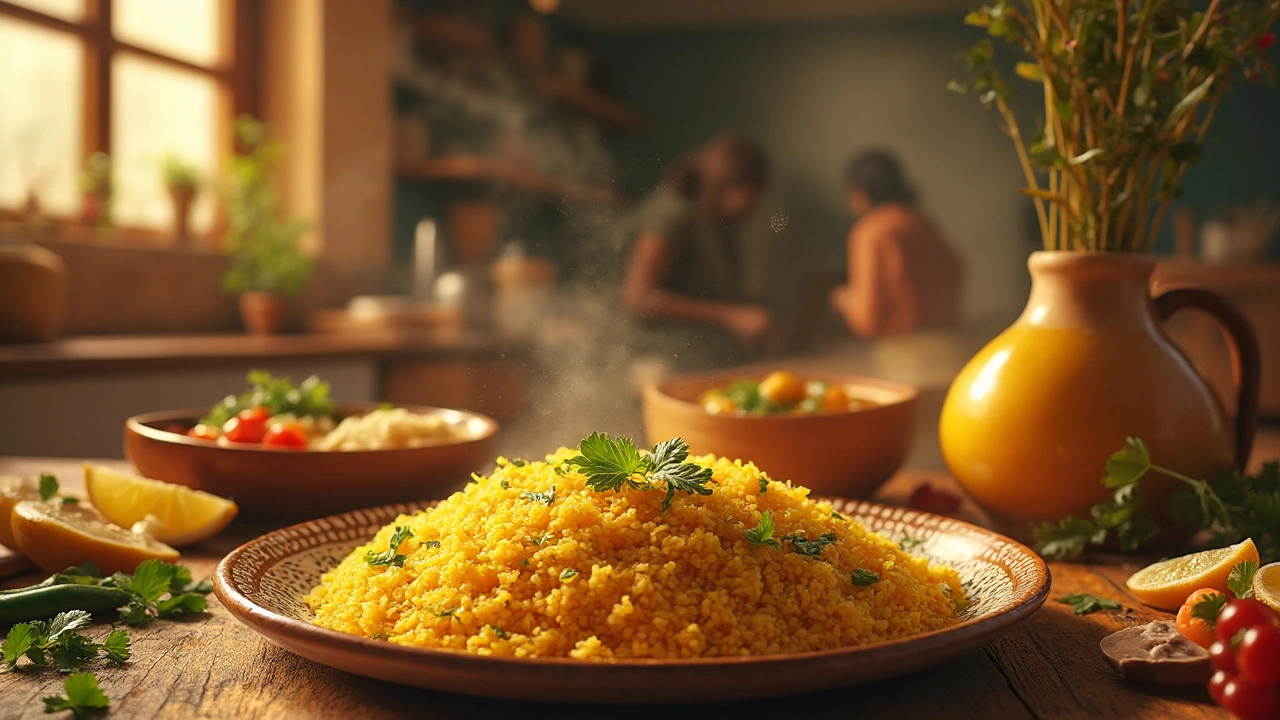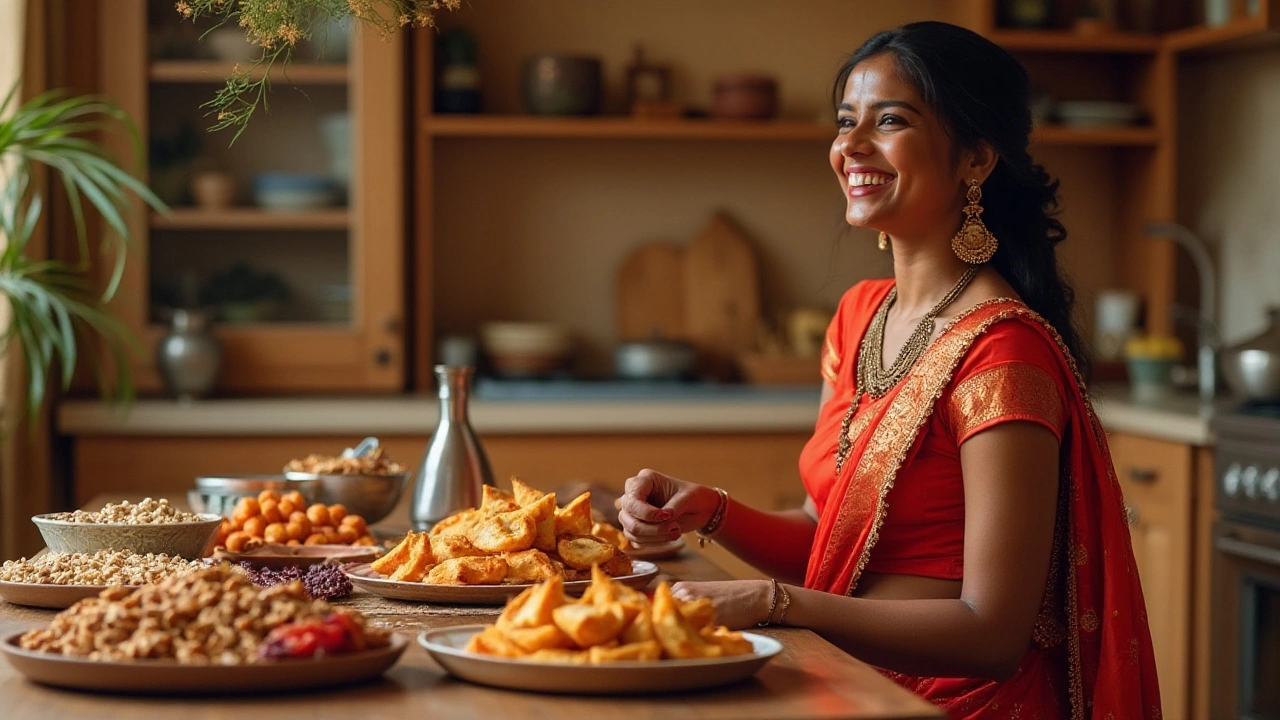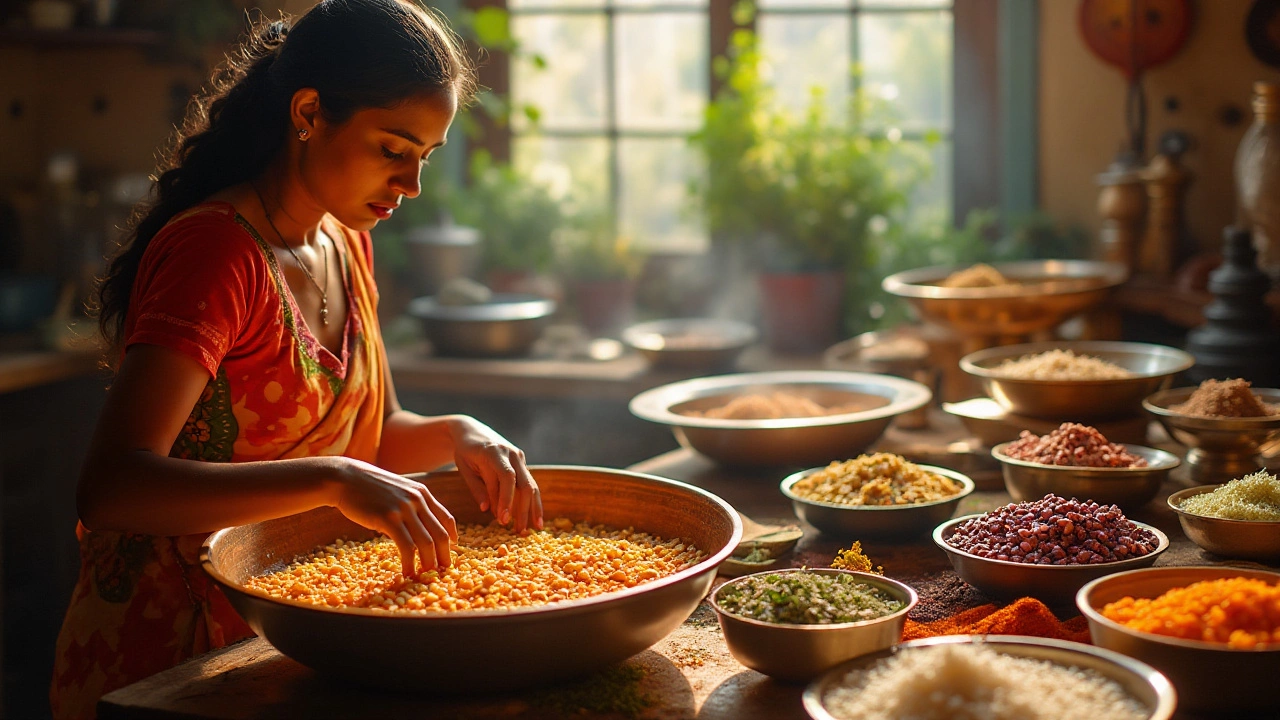Nutrition Insights for Indian Cuisine – Health Benefits, Protein Sources, and Smart Eating
When talking about Nutrition, the science of how food fuels our bodies and supports health. Also known as dietary science, it shapes everything you cook, eat, and feel. Nutrition isn’t just about counting calories; it’s about balancing proteins, carbs, fats, vitamins, and minerals so each meal works for you. In Indian cooking, key players like Dal, a legume‑based staple packed with plant protein and fiber, Fruit, natural sources of vitamins, antioxidants, and quick energy, and Sugar, the sweet component that can boost taste but also spike blood glucose if overused each bring their own nutritional profile. Understanding how these ingredients interact lets you build meals that taste great and keep you strong, whether you’re whipping up a comforting bowl of dal or a festive biryani.
How Core Indian Foods Fit Into a Balanced Diet
Dal is more than a side dish; it’s a powerhouse of plant‑based protein, especially varieties like masoor, moong, and urad. A cup of cooked dal typically delivers 7‑9 grams of protein, 20 grams of carbs, and a hefty dose of iron and folate, making it a go‑to for veg ‑ friendly meals. Pairing dal with a whole‑grain like brown rice or millet adds complex carbs and extra fiber, creating a complete amino acid profile that rivals meat for many athletes. Biryani, on the other hand, mixes rice, meat or vegetables, ghee, and a cascade of spices. While it can be calorie‑dense, the spices—turmeric, cumin, coriander— contribute anti‑inflammatory compounds, and the protein from chicken, lamb, or paneer balances the carbohydrate load. Smart tweaks, like using basmati brown rice or adding extra veggies, keep the flavor while trimming excess fat. Fruit offers a quick boost of micronutrients without adding heavy carbs. Seasonal Indian fruits such as mango, guava, and papaya rank high in vitamin C, beta‑carotene, and dietary fiber. Eating a piece of fruit as a snack or dessert can curb cravings for sugary treats, helping to manage overall sugar intake. Speaking of sugar, it’s a double‑edged sword in Indian cooking. From jaggery in sweets to a pinch of sugar in savory sauces, it enhances flavor and balances acidity. However, studies show that high sugar consumption—especially in refined form—links to increased risk of diabetes and heart disease. Monitoring portion sizes, opting for natural sweeteners, and choosing whole‑fruit sugars over refined white sugar can keep your diet in the sweet spot. Together, these components illustrate a core principle: Nutrition thrives on variety and balance. By rotating protein‑rich dal, flavor‑dense biryani, and antioxidant‑packed fruit, you meet daily macro and micronutrient goals while enjoying the rich tapestry of Indian flavors. Adjustments like soaking dal to improve digestibility, adding a splash of lemon to biryani for better iron absorption, or pairing fruit with a handful of nuts for sustained energy demonstrate how small tweaks boost health without sacrificing taste.
Below you’ll find a curated collection of articles that dig deeper into each of these topics. Whether you’re curious about the exact protein content in different dal varieties, want quick tips to make biryani lighter, or need a guide to choosing the healthiest fruit for your diet, the posts ahead break down the science and share practical kitchen hacks. Dive in to discover actionable insights, flavor‑forward tricks, and evidence‑based advice that will help you master nutrition in every Indian meal you prepare.
Macronutrients Calculator
Discover how a macronutrients calculator can revolutionize your diet and health by providing a personalized breakdown of essential nutrients. Learn about macronutrients, their roles in your body, and how to effectively balance them for optimal well-being. With practical tips and real-world examples, you'll gain insights into tailoring your nutrition to meet your personal goals. Whether you're a fitness enthusiast, aiming to lose weight, or just curious about healthy eating, this guide has something for everyone.

Roti Calories Calculator: Know Your Nutrition in Seconds
Explore the Roti Calories Calculator to easily track your nutritional intake. Learn about the calories in one roti, how many chapatis you should eat in a day, and the connection between roti consumption and your Body Mass Index (BMI). Gain practical tips and legal insights on using calorie calculators effectively to support your health and wellness journey.

Chia Seeds in Hindi: फायदे, उपयोग और पोषण जानकारी
Chia seeds have gained popularity for their numerous health benefits and versatility in recipes. Discover how these tiny seeds can enhance your health, with a focus on practical uses and nutritional value. Understand insights tailored for Hindi-speaking audiences, along with valuable tips for incorporating chia seeds into your diet. Looking for clear ways to harness their benefits? This guide offers solutions and answers.

Roti Calories Calculator: Stay Fit While Enjoying Your Meals
Discover how a roti calorie calculator can help you manage your diet without giving up your favorite meals. Understand the calories in one roti and how many chapatis you should eat in a day based on your Body Mass Index (BMI). This guide also explores legal standards for labeling nutrition content and offers practical tips for combining local tastes with health goals.

Discover the Healthiest Breakfast in the World: An Indian Twist
Explore the healthiest breakfast option in India, combining timeless tradition with nutritional benefits. Learn about the magic of poha, its easy preparation, and its profound impact on health. Enhance your mornings with simple tips and interesting facts about this balanced meal. This insightful article will guide you on incorporating poha into your morning routine for a healthier start.

Effective Weight Gain Tips for Skinny Girls: Healthy Indian Snacks
Gaining weight can be as challenging as losing it, especially for those with high metabolism or particular dietary preferences. For skinny girls looking to gain weight healthily, incorporating nutrient-dense Indian snacks is essential. This article explores the nuances of a balanced diet with a focus on calorie-rich and nutritious Indian foods that promote healthy weight gain. From traditional snacks packed with good fats and proteins to smart eating habits, discover ways to achieve your desired weight healthily.

The Impact of Skipping Soaking on Pulses and Dal Recipes
Skipping the soaking step when preparing pulses might seem like a time-saver, but it can have significant effects on texture, nutrition, and cook time. Soaking helps soften pulses, making them easier to cook and digest, while also reducing anti-nutrients like phytic acid. Without soaking, pulses might not cook evenly and could retain anti-nutrients that hinder absorption of essential minerals. Learn how to make the best choice for your dal recipes and ensure maximum flavor and nutrition.